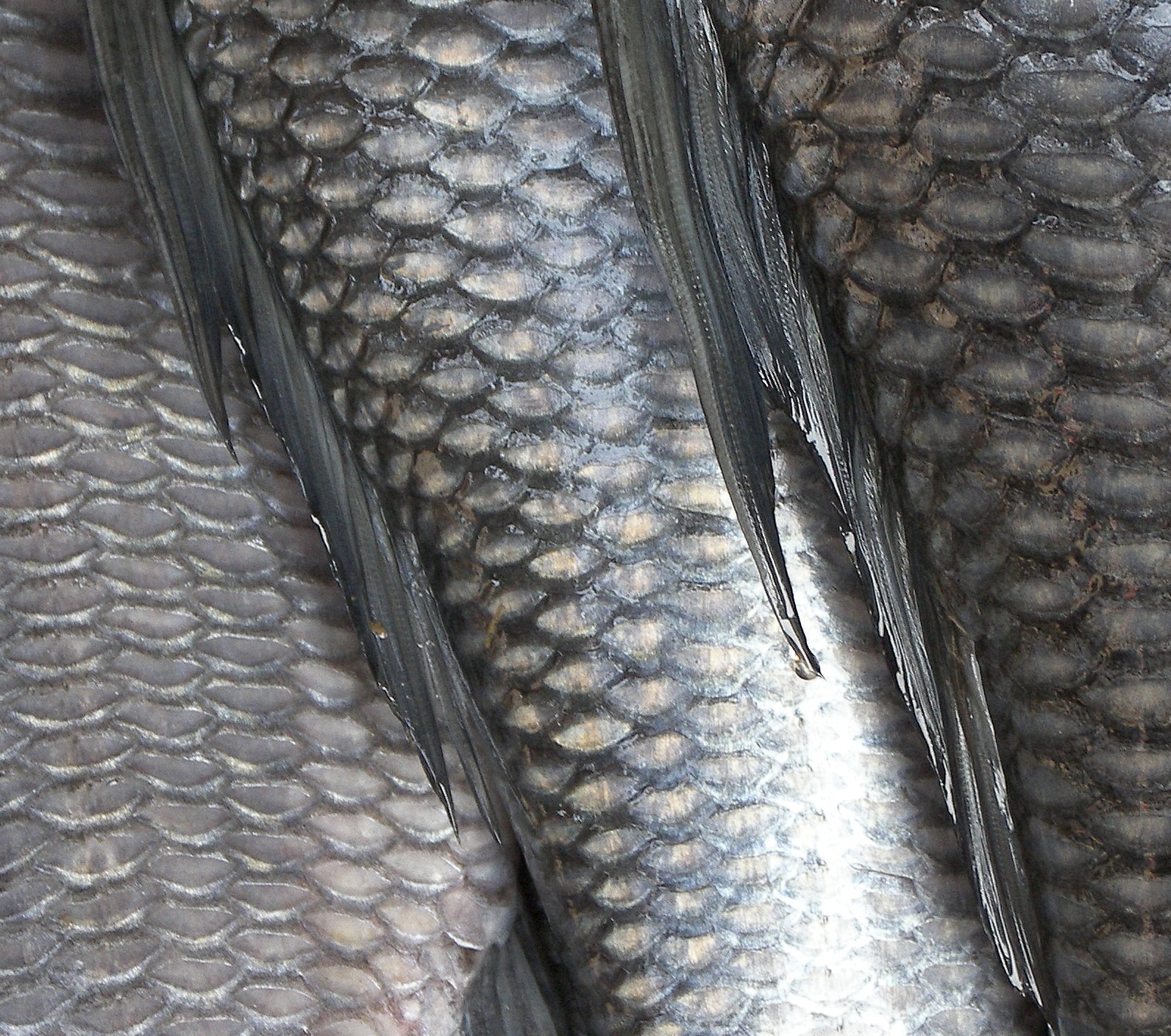Where do all the salmon go? Planet Earth Online
Interview with
Kat - Salmon numbers in the UK have been falling since the 1970s. This isn't down to overfishing, so scientists are trying to find out why. However, salmon are pretty tricky to follow. Their life cycle takes them from rivers into the open oceans, and then back again to rivers to breed. Now, a new technique that uses samples of the fish's scales could change all that. Planet Earth podcast presenter Sue Nelson met up with South Hampton University's Clive Trueman and Kirsteen Robinson.
Clive - So here we are in the imaging biominerals lab where we keep the scale archives.
Sue - Now you say scale archives, all I can see so far are a bundle of small white boxes.
Kirsteen - That's the collection from the River Frome archive which contains scales mounted on microscope slides dating from 1971 all the way up to 2002 and in each box...
Sue - Just taking one out there...oh yeah, it's got two tiny translucent scales, probably slightly smaller than my fingernail.
Sue - Clive, what are these scales actually made from?
Clive - Scales are actually related to teeth, evolutionarily, and they're made of a protein and a mineral. The mineral part is apatite, calcium phosphate, and the organic part is collagen. The collagen grows underneath the apatite and it's the collagen part that we're actually using for our analyses.
Sue - Before we get to the analysis, I see that there are a couple of microscopes over there on the other side of the lab, so I suspect this is an ideal opportunity for us to actually look at those fish scales in more detail and find out exactly how you examine them.
Clive - Absolutely.
 Sue - Kirsteen, you're just going to pop that slide under the microscope ... I did not expect that. If you hadn't told me that was a fish scale, I would say you've got a cross section of a tree.
Sue - Kirsteen, you're just going to pop that slide under the microscope ... I did not expect that. If you hadn't told me that was a fish scale, I would say you've got a cross section of a tree.
Kirsteen - Yes, it does look very much like that and it's because the salmon put down these calcium phosphate, these apatite mineral rings on top of the scale every two to three weeks, sometimes every one week if they're growing rapidly they'll lay down another ring on this scale.
Sue - What are you actually looking for then?
Kirsteen - What we're looking for is the very final season of marine growth at sea and from these salmon scales, very much like on a tree, you can tell how many winters they've had at sea, how many summer's they've had at sea and how many years they've lived in total, including how many years they have spent in fresh water.
Sue - What, purely from counting the rings?
Kirsteen - It's actually simpler than counting the rings. What we do is we use the rings to determine which part we sample and if you look at the scale through a microscope, there are dark bands and light bands. The dark bands are where the rings are very close together because the fish have been growing slowly in the winter and the light bands are where the rings are further apart because the fish have been growing rapidly when there's been lots of food in the summer. So what we do is dissect out the final portion of summer from the scale and then we have that portion of marine collagen that they grew while they were feeding at sea and we can analyse that chemically to find out what was going on with them at sea.
Sue - Now this is where you come in isn't, Clive, as a chemist. How do you do this analysis?
Clive - All marine food chains depend upon phytoplankton, the plants of the ocean at the bottom of the food chain. Now, when those plants grow they fix carbon and there's two forms of carbon, two isotopes, and the proportion of those different isotopes fixed into the phytoplankton cells is dependent upon the environmental conditions at the time those plankton grew and in the place those plankton grew. So, fish feeding on plankton in one particular place at one particular time will inherit an isotopic signal or an isotope ratio that's different from fish feeding in a slightly different place. We try and match up the carbon isotope record that we see in the scales with the record of sea surface temperature that we can get from satellites or from records of ocean temperature, and they also go back for decades.
Sue - Kirsteen, have you found out where Atlantic salmon are spending a certain period of their time?
Kirsteen - We've looked at two populations specifically, the one from the River Frome in Dorset and another one from the north east coast of the UK and what we've found was that the River Frome fish tended to match up between their isotopes and sea surface temperature records around Iceland, whereas the north east coast salmon seemed to be spending their summers in the Norwegian sea with the younger portions of the population spending it further south towards home and the older portions further north. Not only that we've found something very unexpected in that fish from just a few hundred miles apart are doing completely different things in the ocean.









Comments
Add a comment